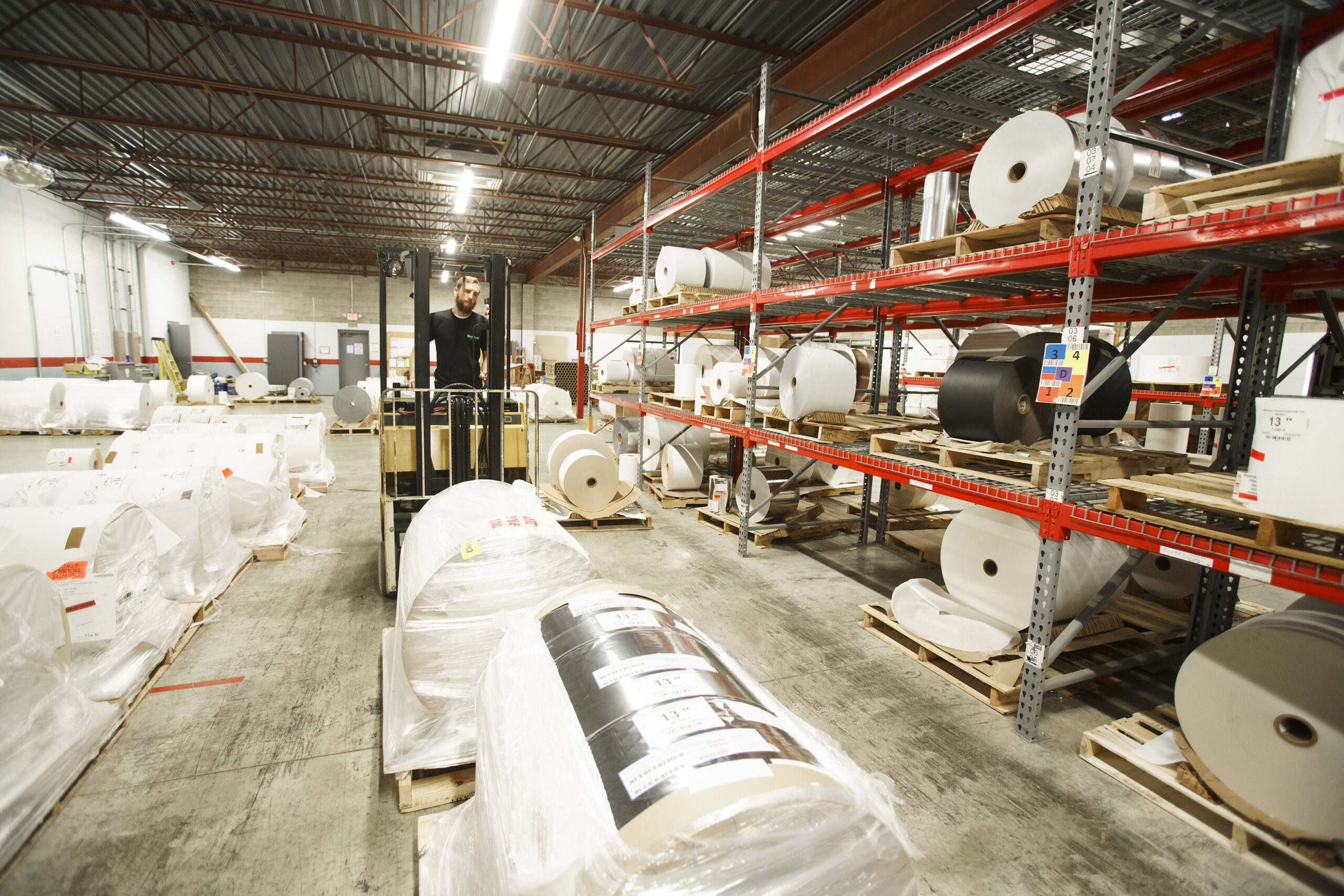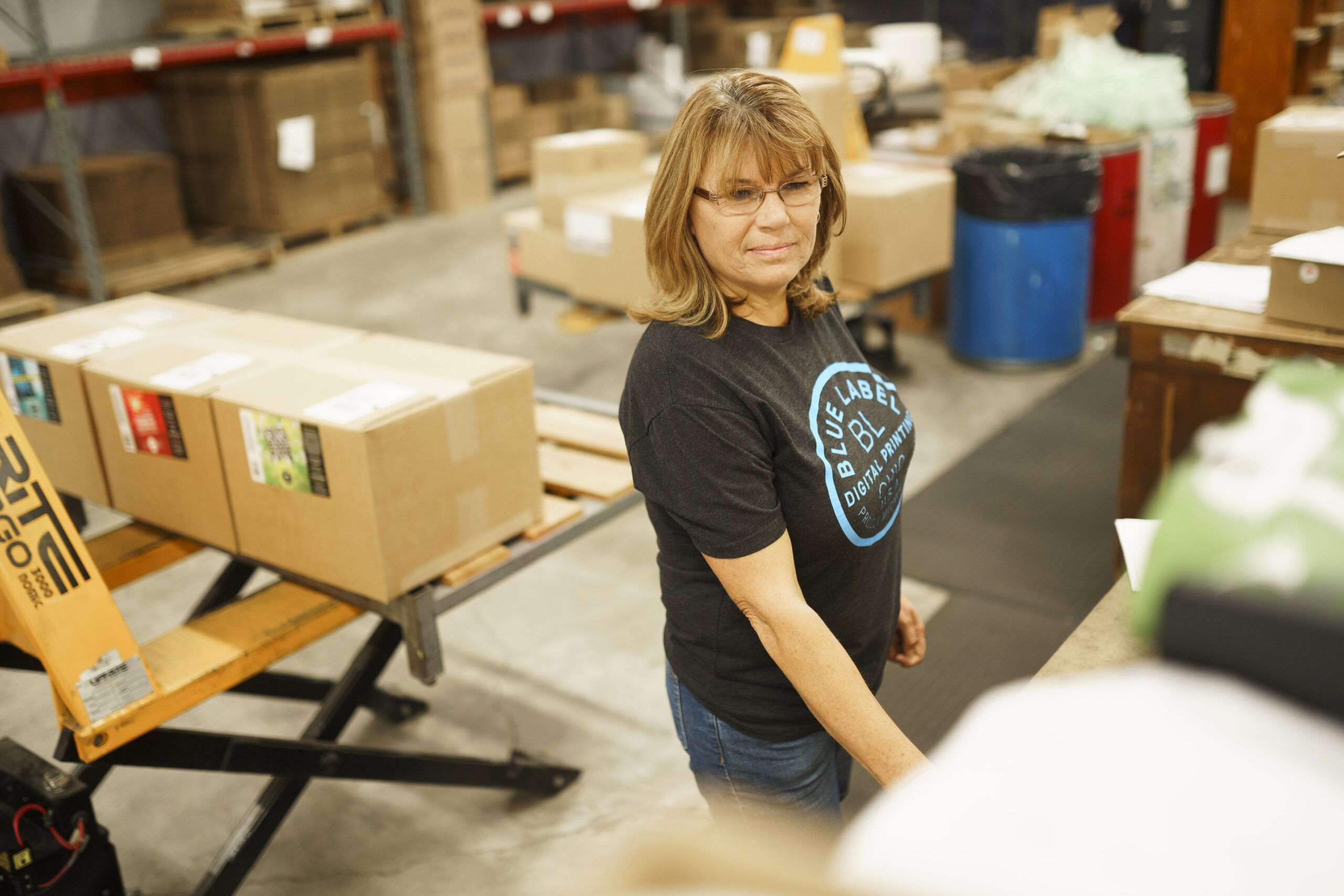Shrink Sleeves: Storage and Shipping
The special materials used for shrink sleeves makes these labels more susceptible to potential damage, especially when they’re being transported or saved for future use. Fortunately, a little preparation can help you protect your shrink sleeve labels ahead of application, especially when it comes to environmental concerns and handling.
Maintain Temperature Control
One of the challenges involved with shipping and storing shrink sleeves is that these labels are very sensitive to environmental changes. If the shrink sleeves get too hot, cold, wet, dry, or anything else, it can cause the material to react and distort the labels or worse, make them completely unusable. It’s important to make your shipping and storage areas as climate controlled as possible to keep your investment safe.

These environmental factors can be a major concern when it comes to shipping. If it’s a hot month, it can get be sweltering in an unprotected truck bed. In the winter, the opposite can happen. In some cases, companies will even used temperature-controlled shipping to transport shrink sleeves to protect against any damage that can happen during transit. Some applicators will also require temperature gauge labels that will display if a shipment got too hot or cold. This way they’ll know that a shipment was compromised right away and won’t waste production time trying to apply warped shrink sleeves on containers.
Storage can also be an issue without some planning. Warehouses or other storage facilities can undergo fluctuating temperatures and humidity levels. Both of these can affect the ink on the shrink sleeves or warp the label material over time. As such, its encouraged that you or your applicator have climate-controlled storage area if you plan to have any extra shrink sleeves on standby or if there will be a delay between delivery and application.
Handle Shrink Sleeves with Care
Environmental factors aren’t the only potential danger to shrink sleeves. Improper handling can also cause scrapes, scuffs, and other unsightly damage.
One advantage of shrink sleeves is that the ink is printed on the inside of the label. This process protects the ink from scratches after the sleeve is applied to a can or some other container. However, the ink isn’t protected until after application – remember, heat will make the sleeves warp prematurely – which means there’s not a lot protecting that ink until that step. As a result, it’s important to delicately handle sleeves before application.
Of course, shrink sleeves can require a lot of handling after they’re printed. Depending on your vendors, your printer may need to send the rolls to a converter to seam them into sleeves. After that, the sleeves are shipped to an applicator, also known as a decorator, that apply them to your containers.
Since shrink sleeves need a little extra protection before application, it’s important to take steps to help limit the potential of damages caused by improper handling. Some label printing companies have converting equipment in house, which will cut down on the number of times your labels are shipped and handled. Your printer can also put labels on boxes containing shrink sleeves so that everyone knows the contents are delicate.

Work with a Printing Company that Takes Care of Your Shrink Sleeves
Shrinks sleeves can help you achieve a special look for your products, but it’s important to work with a label printing company that gives you the labels you need to succeed. At Blue Label, we’ve invested in both state-of-the-art digital printing presses and shrink sleeve converting equipment. That means we can not only print quality shrink sleeves, we can also help you cut down on the number of vendors you’ll need, the amount of times your shrink sleeves are handled, and the length of production time.
Ready to invest in quality shrink sleeves for your products? Contact Blue Label today to talk to our experts about your next label project.